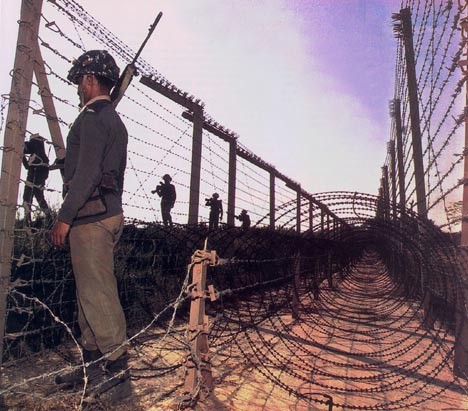Project Tiranga
Increased tensions throughout
A chronological order of events that have occurred since 1999 where the conflict between the 2 countries has always come forward.
1999: Kargil
During the 1990s, however, escalating tensions and conflict due to separatist activities in Kashmir, some of which were supported by Pakistan, as well as the conducting of nuclear tests by both countries in 1998, led to an increasingly belligerent atmosphere.
1987: Brass Tacks
The Brass Tacks crisis between India and Pakistan took place between November 1986 and March 1987. With the crisis peaking in January 1987, India had deployed 400,000 troops, or about half the Indian army, within 100 miles of Pakistan.
1984: Operation Meghdoot
Operation Meghdoot was the name given to the attack launched by the Indian Military to capture the Siachen Glacier in the disputed Kashmir region, precipitating the Siachen Conflict. Launched on April 13, 1984, this military operation was unique as the first assault launched in the world's highest battlefield. The military action eventually resulted in Indian troops managing to gain control of the entire Siachen Glacier.
1971: Another India-Pakistan War
The Indo-Pakistani War of 1971 was a military conflict between India and Pakistan. The war is closely associated with the Bangladesh Liberation War (sometimes also referred to as the Pakistani Civil War). The armed conflict on India's western front during the period between 3 December 1971 and 16 December 1971 is called the "Indo-Pakistani War" by both the Bangladeshi and Indian armies, while Pakistan considers it a larger part of the East Pakistan rebellion.
Indo-Pak War of 1965
The Indo-Pakistani War of 1965 was a culmination of skirmishes that took place between April 1965 and September 1965 between India and Pakistan. This conflict became known as the Second Kashmir War fought by India and Pakistan over the disputed region of Kashmir, the first having been fought in 1947. The war began following Pakistan's Operation Gibraltar, which was designed to infiltrate forces into Jammu and Kashmir to precipitate an insurgency against rule by India. The five-week war caused thousands of casualties on both sides.
Indus Water Treaty
The partition of the Indian subcontinent created a conflict over the plentiful waters of the Indus basin. The newly formed states were at odds over how to share and manage what was essentially a cohesive and unitary network of irrigation. Furthermore, the geography of partition was such that the source rivers of the Indus basin were in India. Pakistan felt its livelihood threatened by the prospect of Indian control over the tributaries that fed water into the Pakistani portion of the basin.
The Partition
In February 1947, the new British official set over the Indian subcontinent, Lord Mountbatten, faced with the failure of the federal proposal, supported partition of India into two states: the current India, with a Hindu majority, under the control of the Congress Party, and Pakistan, with a Muslim majority, under the control of the Muslim League. Pakistan was further divided by being cut into two parts 900 miles apart.
Indo-Pakistan Conflicts/ Wars
 The All India Muslim League (AIML) was formed in Dhaka in 1906 by Muslims who were suspicious of the Hindu-majority Indian National Congress. They complained that Muslim members did not have the same rights as Hindu members. A number of different scenarios were proposed at various times.
The All India Muslim League (AIML) was formed in Dhaka in 1906 by Muslims who were suspicious of the Hindu-majority Indian National Congress. They complained that Muslim members did not have the same rights as Hindu members. A number of different scenarios were proposed at various times.
Indi-Pakistan conflicts
Right from the time India was partitioned into India and Pakistan, the 2 nations never been at peace with each other. 3 wars in the first 24 years and a series of other incidents including the nuclear tests conducted by both nations, another war in 1999 followed by many other bombings and conflicts, have always kept people on both sides cautious. Although in the recent years governments have stressed on the need for an increased dialogue, the conflict between the 2 neighbors has not yet been fully resolved.
